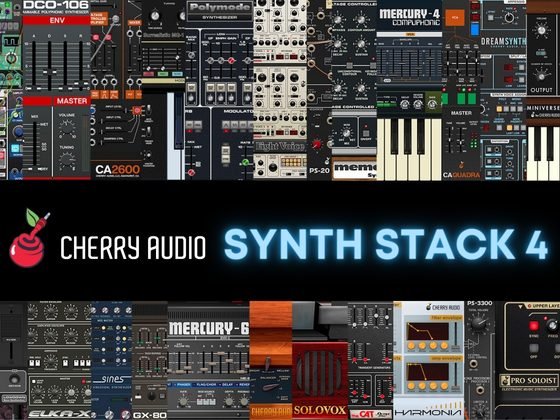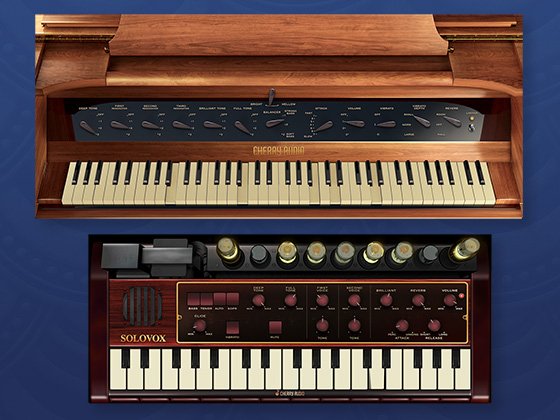$6.99 $40.00
A short-lived intermediate technology, digital tape can be spliced/reversed/slowed/sped/warbled/looped like tape while also replicating and producing artifacts like digital. This module acts as a digital tape recorder with 14 seconds of looped tape onto which you can record audio (or other signal) at any interval, specified with start and end knobs, and allowing you to splice together a mixtape collage of sound for playback. This device also aims to be the modular incarnation of those samplers with grids of square buttons, only offering a full set of controls on each button and separating the buttons into individual devices that can be chained into a whole, according to your customizations.
Playback can be cropped, looped, one shot, gated, reversed, and pitched across two octaves. A 1V/oct input allows you to perform melodies from a keyboard or sequencer. Alternatively, an array of modules can each be assigned their own midi note (with the top-right note # dial) so that different tapes can be spread across the keyboard, responding at different notes. CV gates and triggers can be fed right into the main button to activate it too, providing you with lots of options for control.
Mainly, this device lets you capture audio from complex patches and then use that as the basis for another patch, or you can capture audio via mic. The upper Rec/ Play switch sets the mode and pressing the large button will record or play respectively. You can specify the start and end times for recording and/or playback with knobs across the middle (there are also tiny fine adjustment knobs next to their larger counterparts). If you stop recording before the end, you’ll find the end knob adjusts automatically to the end of your recording for easy looping (you can still roll it back to a longer interval for playback with end silence if you like), and you’ll also notice that the mode switch automatically flips to play to help prevent accidents. If the start point is later than the end point, you’ll be either recording or playing in reverse. A handy reverse button flips the start and end points back and forth for quick time reversals, and a single tape loop can consist of mixed direction recordings, with forward and reverse parts here and there. A Q button quantizes the end point to the nearest eighth note (half a beat) from the start point, based on the system tempo. The TET knob lowers and raises the pitch by semitone intervals (up to one octave down and one octave up), utilizing the idiosyncratic pitch shifting algorithm from the TET Trigger Player and TET Effector (with automated ratio calculation/assignment). Use the neighboring 1V/oct to perform melodies via TET (from notes C1-C3).
A green button near the rec/play switch prevents input sound from being fed to the output to prevent feedback when recording from a microphone or to ensure that recording sources are blocked from joining the output. When the green button is on, endless chains of EmptyC modules can be created by connecting the output of one to the input of the next (and the final device’s output goes to the Main Out). Thus, they assemble into your own custom sampler with full-blown modular connectivity. Particularly if you are running loops, modules can be secondarily chained via sync in and sync out jacks - when a module’s tape completes a loop, it sends a trigger out and if it receives a trigger at sync in, it returns to the beginning of its loop. These connections keep loops from slowly running astray from each other.
Looping behavior is specified with the green repeat button (center). The midi hold switch determines whether the button behavior is sustained (right position) or if it is immediately released in the absence of activation. The four possible combinations that can be achieved between the repeat button and midi hold switch allow for one shots (no loop, hold on), gated activation (no loop, hold off), loop toggling (loop on, hold on), and looping sustain (loop on, hold off).
For exacting recordings, a trigger input (next to the rec light) can be used to time the start of a recording with another device or a keypress. CV control of the reverse button (adjacent to it) and the start and end points (a micro jack right into the middle of the knob that connects just the same as a regular-sized jack) allow you to automate live recording, splicing, loopback, and so on.
The tape is stored in the module itself, so rather than loading or saving files, the sound travels with the unit itself, inside patches or device presets you save, or being reproduced when you duplicate the device.
You can use it as a performable tape player, a beatbox, or a delay-like effect within the same patch, and despite its vast functionality, you’ll see that you can just kind of intuitively tinker with it and produce powerful results that somehow feel both readily manipulated and serendipitously surprising at once.



























































